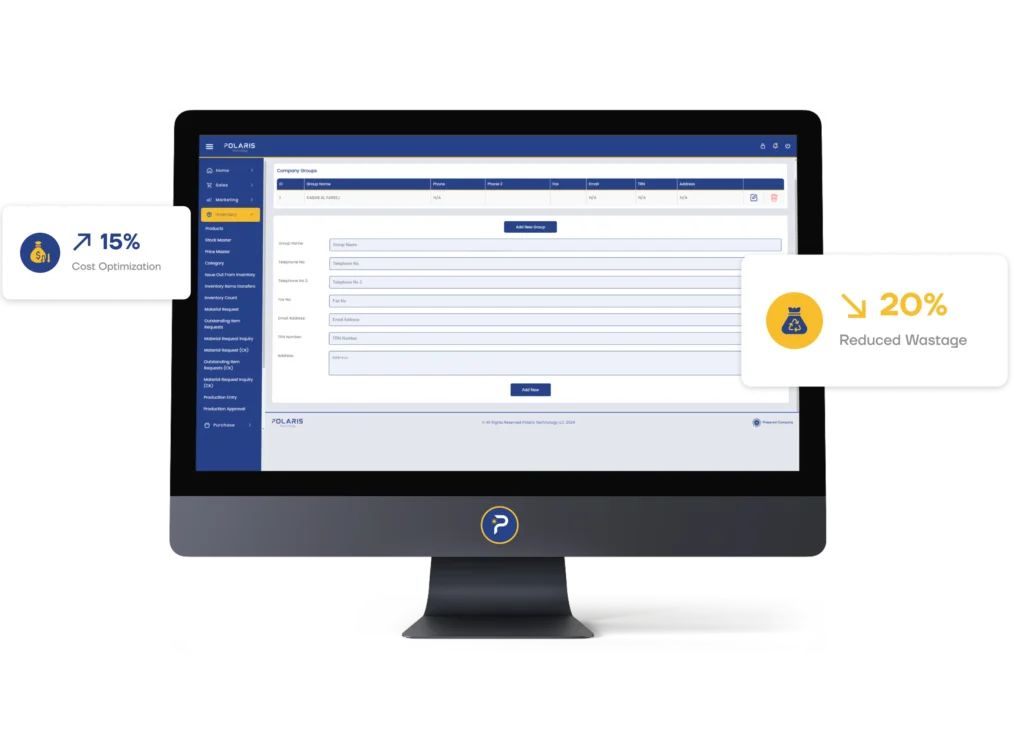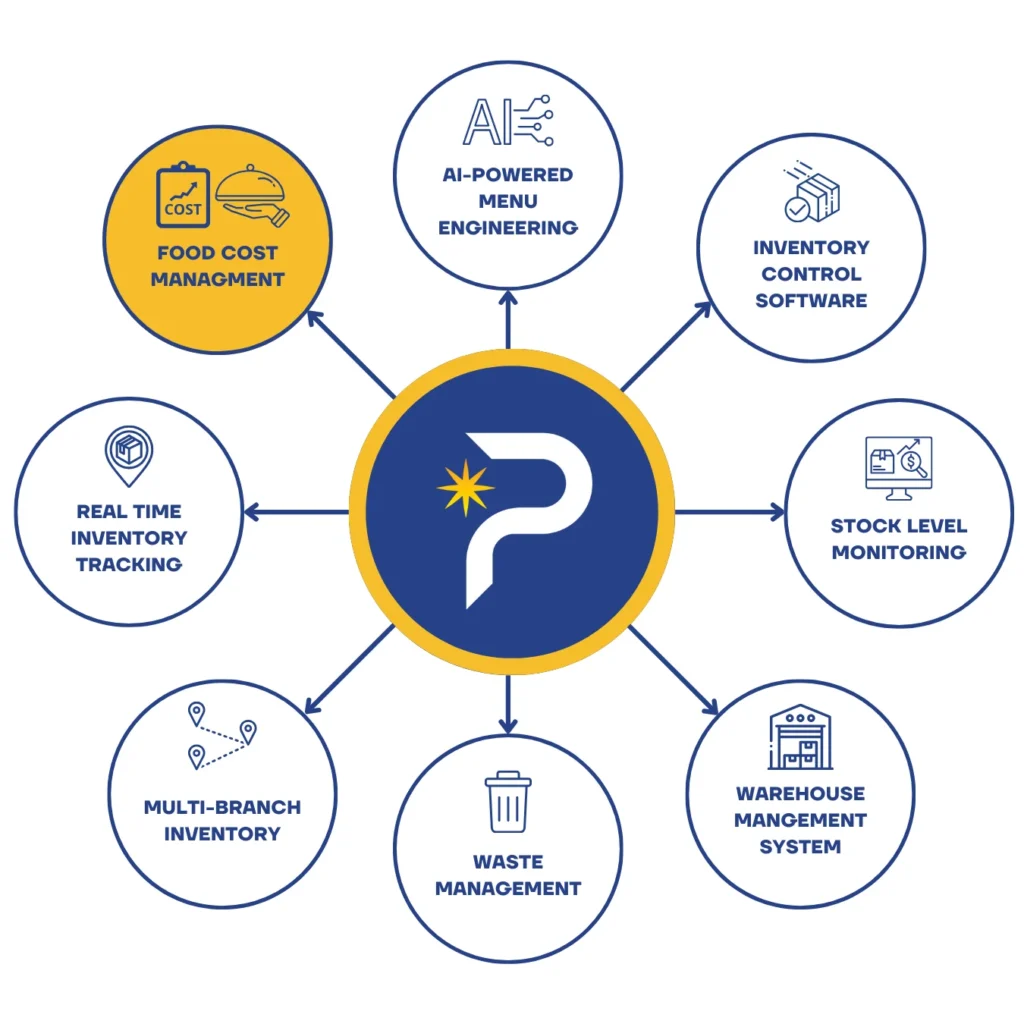Master Your F&B Inventory. Master Your
Growth Profits Costs
Restaurant inventory management is the process of overseeing and controlling the food stocks, beverages, and supplies used in a restaurant operation.

How Restaurant Inventory Management Works
A restaurant inventory system manages ingredient and supply flow efficiently. It begins by inputting items into a database, including details like quantity and reorder points. As items are used, the system tracks transactions in real-time, deducting quantities accordingly. Periodic physical counts reconcile actual levels with recorded data, identifying discrepancies.
The system generates reports and analytics to optimize inventory levels, streamline ordering, and minimize waste. By providing insights into usage patterns and purchasing trends, the system contributes to cost savings and operational efficiency.
Overall, it ensures smooth restaurant operations by managing inventory effectively.

Benefits of Restaurant Inventory Management
Reduced Food Costs
By tracking inventory levels closely, restaurants can identify and eliminate overstocking and waste, saving money on food expenses.
Higher Profits
Accurate inventory management leads to better cost control, which directly impacts profit margins.
Enhanced Efficiency
Streamlined inventory processes save time and labor, allowing staff to focus on delivering exceptional customer service.
Problems F&B Inventory Management Solves
Food Waste
An advanced inventory management system reduces food wastage by up to 20% per year, saving money while saving food!
Overstocking
Excess inventory consumes capital, limits storage space, increases the risk of spoilage or expiration, which leads to waste.
Inaccurate Costing
Inventory management leaves no room for unwanted price fluctuations and cost inaccuracies for your menu pricing.
Restaurant Inventory Management FAQ
Absolutely, inventory management is crucial when it comes to controlling the costs of your F&B business. Here’s how:
- Reduces holding costs (the fees incurred for storing goods in a warehouse)
- Improves cash flow (helps to free up cash by avoiding excess stocks, optimizing ordering or preventing stockouts).
- Minimizes stockouts (by monitoring inventory levels, it informs you when, what, and how much of each item you should order).
An inventory management system is essential for F&B businesses to streamline operations, control costs, and maximize profitability. It provides real-time visibility into inventory levels, allowing you to track stock quantities accurately and avoid overstocking or stockouts. By optimizing inventory levels, you can reduce the risk of wastage and spoilage, leading to significant cost savings.
Reducing food waste and spoilage while maintaining optimal inventory levels is crucial for restaurant profitability. Polaris ERP’s inventory system offers advanced features to address these challenges effectively. By utilizing real-time tracking and data analytics, Polaris ERP enables restaurants to forecast demand accurately and set appropriate reorder points, minimizing overstocking and reducing the risk of perishable items spoiling before use. The system also facilitates efficient inventory rotation strategies, ensuring that older stock is used first to minimize waste. With features like expiration date tracking and automatic alerts for soon-to-expire items, restaurant staff can proactively manage inventory and prevent unnecessary spoilage. Moreover, an inventory management system provides valuable data and insights that can inform strategic decision-making. By analyzing inventory trends and consumption patterns, you can make informed decisions about purchasing, pricing, and menu planning, ultimately driving business growth and success. Overall, investing in an inventory management system is essential for F&B businesses looking to operate more efficiently, reduce costs, and stay competitive in the industry.
Contact our sales team today to schedule a demo and learn how Polaris ERP can transform your restaurant’s inventory management practices.
